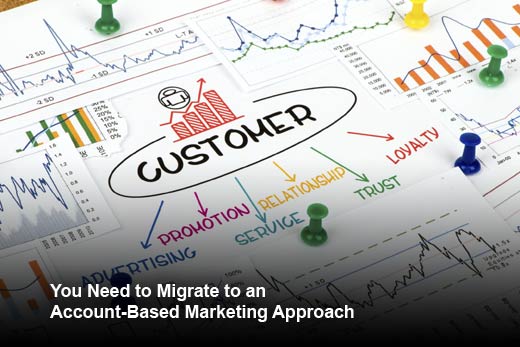Marketing and sales teams are increasingly held accountable for bringing high volumes of qualified leads and converting them to customers. But with the customer ecosystem becoming more and more competitive, this task is proving to be a challenge for most businesses today. Luckily, advancements to marketing technology are making it easier to identify and target the best prospects in an efficient manner. The latest technology transformation taking place in the world of marketing? Predictive analytics.
Predictive analytics uses past data to forecast outcomes and target the right prospects – a move that’s redefining the use of data and insights in marketing. Predictive technology also provides a more efficient process for sales and marketing to identify new markets, prioritize inbound leads, and deploy net-new prospects, which has a major impact on the bottom line for businesses. In fact, recent data from Demand Metric and Radius found that companies that applied predictive technology to demand generation goals met objectives 55 percent of the time, compared to 30 percent for companies not using analytics. While marketing and sales teams are becoming more aware of the business benefits that come with predictive, many still struggle to know when to implement predictive technology and how to determine if it’s the right investment for their organization. Predictive technology company Radius offers five key areas to focus on when evaluating predictive analytics.
When and How to Implement Predictive Technology
Click through for five areas organizations should focus on when evaluating predictive analytics, as identified by Radius.
You Lack Customer and Market Insights
Predictive solutions can help generate important go-to-market insights. Identifying and targeting your best prospects requires an accurate and diverse dataset combined with a solid understanding of your customer base and your total addressable market. But more specific questions you need to address include:
- What is your total market size and penetration?
- What do your ideal customers look like? And, how many look-alikes are there in your target market?
- How many of the top accounts are in your CRM versus new accounts you have yet to identify?
Answering these questions is paramount to the success of your marketing and sales strategy. If your company needs help drawing market insights from customer data, consider implementing a predictive solution to address it.
Tip: When evaluating a predictive vendor, ask your sales rep for case studies that reflect relevant challenges and potential solutions for customer and market insights.
You Have Too Many Inbound Leads
A common challenge facing most marketing teams is identifying leads that are the most likely to convert. In fact, according to SiriusDecisions, only 30 percent of “marketing qualified leads” turn into “sales qualified leads.” This low confidence in the correlation between lead qualification and the actual likelihood of a lead to buy can result in a lot of wasted time for most sales teams. However, marketers can use predictive technology to better score and grade inbound leads and prioritize the best ones for sales. With predictive prioritization, any marketer with existing records in their CRM or marketing automation system can uncover and act on hidden opportunities.
Tip: When evaluating a predictive vendor to help prioritize leads, consult analyst firms like SiriusDecisions, Forrester, and Gartner to hear what the experts are saying about using different predictive solutions.
You Need to Migrate to an Account-Based Marketing Approach
With the increasing adoption of account-based marketing (ABM), companies are moving away from the old methods of lead generation to a more targeted account focus. Marketers can use predictive technology to help drive their ABM efforts and identify the right accounts they should target. An important step in building an ABM program is to build a list of target accounts that are highly likely to become your next customers. Using predictive analytics, you can identify the attributes shared by your highest-value customers and build a list of pre-qualified accounts. Sales and marketing can then align around this account list and prioritize marketing spend and outbound efforts to these key accounts.
Tip: Talk to your predictive vendor and learn how they can help you implement an ABM strategy.
You Need More High-Quality Leads
While businesses face a wide range of challenges throughout the buyer’s journey, one of the most frequently voiced challenges is the need for marketing teams to deliver more high-quality sales leads. The process seems simple: find more accounts that look similar to current customers. However, minimal buyer data combined with basic reporting capabilities limits marketing’s ability to efficiently identify target accounts. Predictive can help guide prospecting and offer look-alike targeting so you can drive demand with the highest quality leads. By analyzing your historical customer data, predictive applies ideal customer / lead profiles to identify new target accounts and contacts.
Tip: Because predictive is a relatively new space, when researching predictive solutions, look for dedicated vendors that will provide support and guidance throughout your business’ predictive journey.
You Need to Sell Predictive Internally
The most crucial step in the predictive evaluation process is to actually create a business case and present it to your management team. Making a case for predictive can be challenging so you need to make sure you have the necessary resources to help convince internal decision makers. Focus on the metrics that matter to your executive team and include a cost-benefit analysis for investing in the predictive solution. Also, make sure you find out how your predictive vendor will help you effectively integrate predictive into your workflow, and what kind of support you have available after implementation.
Tip: Conduct a Proof of Concept (POC) to help support your case. POCs can come in the form of a trial, a paid pilot, or a custom presentation.








